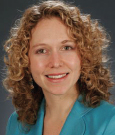Promoting healthy behaviors among cancer survivors is associated with improved quality of life according to many studies. But how to translate that evidence into community practice remains a huge question, and the need for answers is growing.
It’s not only the lack of consensus on how to help cancer survivors adopt and maintain healthy behaviors—the who, what, and where—that make this an urgent problem, said Catherine Alfano, PhD, of the National Cancer Institute (NCI), speaking at the annual meeting of the American Society of Preventive Oncology (ASPO) in March. Other factors include the burgeoning number of cancer survivors (including older survivors); the expectations of the baby boom generation for returning to active lifestyles with high quality of life; and the projected shortage of oncologists, primary care providers, and nurses.
“We are facing a perfect storm,” she said. “From my perspective at the National Cancer Institute, there is only one way out of it: We must create a new model of survivorship care that focuses on helping cancer survivors manage their own health after cancer—preventing or alleviating problems through healthy behaviors such as exercise, a healthy diet, and maintaining a healthy body weight.”
Dr. Alfano and other speakers emphasized that the traditional medical model, in which oncologists ask about health behaviors during routine follow-up appointments, has had limited impact. New models have emerged within the survivorship programs of some major cancer centers. But there is a need to know what works outside these major centers, in communities where most cancer survivors live, she said.
Traditional Model
The traditional model has potential advantages but also significant barriers. On the plus side, physicians and other health providers are seen as credible sources, noted Bernadine Pinto, PhD, of The Miriam Hospital and W. Alpert Medical School of Brown University, Providence, Rhode Island. And follow-up oncology visits, which typically continue for about 5 years, seem to provide a ready-made opportunity to discuss lifestyle issues and health behavior change.
Yet health behavior counseling is often not provided. The lack of office systems to incorporate this kind of counseling is one barrier, Dr. Pinto said. Moreover, many oncologists have the perception that patients don’t want and won’t accept suggestions for lifestyle change. She cited one survey in which fewer than 10% of survivors said a physician had asked about lifestyle issues.
More focused health provider efforts may have some benefit, but it is not clear how much. One recent randomized trial among breast cancer survivors compared extended advice about exercise (personal counseling plus follow-up phone calls) to brief advice (counseling alone).1 While extended advice was effective in the short-term, and brief advice was also found to have some benefit, it was “not enough to conclude that provider advice alone was sufficient to change behaviors,” Dr. Pinto said.
Some comprehensive cancer centers have developed more comprehensive programs. Both The University of Texas MD Anderson Cancer Center in Houston and Memorial Sloan Kettering Cancer Center in New York, for instance, offer disease-specific survivorship clinics, which include medical assessments and health behavior recommendations. The Fred Hutchinson Cancer Research Center, Seattle, refers patients to a survivorship clinic at the Seattle Cancer Care Alliance and provides educational and supportive programs.
But in most clinical settings, survivorship care is still medically and symptom focused, said Karen Syrjala, PhD, of Fred Hutchinson. Reimbursement for more extended programs is problematic, and there are few standards and guidelines for such programs (although she noted that the National Comprehensive Cancer Network and the American Society for Bone Marrow Transplant have issued guidelines recently.)
Community-Based Programs
In one emerging model, community organizations and programs are playing a significant role. The YMCA’s LIVESTRONG program, for instance, has fitness instructors trained in the elements of cancer, post-rehab exercise, and supportive cancer care and who work with individual survivors to tailor a program to their needs. These have many advantages she said, especially for the majority of cancer survivors who live far from major cancer centers.
“This is what I really want to recommend today,” Dr. Syrjala said.
Community-based programs are a strong theme in a 2012 report from the Institute of Medicine (IOM), Living Well With Chronic Illness.2 The report addresses models for long-term management of arthritis, diabetes, and other conditions, including those common in cancer survivors, such as lymphedema and fatigue. Support for community-based efforts and for self-management is among its recommendations.
The cancer community can learn from these, said Karen Basen-Engquist, PhD, MPH, of MD Anderson, who served on the IOM committee that prepared the report. For example, we know that there is often poor adherence to recommendations, and that reimbursement is limited.
More Research
One conclusion of the IOM report was that more research is needed on how to implement such programs. Symposium speakers agreed:
“We have the models, we know the science. Now the question is, how do we move these models of care into the community in successful ways?” Dr. Syrjala said.
“We need more of the right kind of evidence,” added Dr. Alfano. It’s important to know the benefits and costs at multiple levels—those of the survivor, family, provider, and the health-care system, she said.
Dr. Alfano, the appointed discussant of the symposium, also stressed the need to recognize and work within the “diverse places people can get survivorship care in our system.” Other major issues that need to be addressed, she said, are reimbursement for lifestyle interventions, promoting maintenance of lifestyle change (an issue that might influence reimbursement), and health behavior change in families that would support survivors’ health behaviors over time.
What is it going to take to get all of this done? A March 2014 paper from NCI stresses the need for collaboration.3 Authored by Dr. Alfano and others, it focuses on physical activity, but its conclusions could apply to other health behaviors in the context of survivorship care: “Overall, we recommend that physical activity and cancer survivorship research employ additional study designs, include relevant stakeholders and be more collaborative, integrated, contextual, and representative in terms of both setting and participants.”
At the ASPO symposium, Dr. Alfano echoed that conclusion, referring to an old African proverb: If you want to go fast, go alone; if you want to go far, go together. ■
Disclosure: Drs. Pinto, Alfano, Syrjala, and Basen-Enquist reported no potential conflicts of interest.
References
1. Pinto BM, Papandonatos GD, Goldstein MG: A randomized trial to promote physical activity among breast cancer patients. Health Psychol 32:616-626, 2013.
2. Institute of Medicine: Living Well With Chronic Illness: A Call for Public Health Action. Washington, DC, National Academies Press, 2012. Available at www.iom.edu.
3. Phillips SM, Alfano CM, Perna FM, et al: Accelerating translation of physical activity and cancer survivorship research into practice: Recommendations for a more integrated and collaborative approach. Cancer Epidemiol Biomarkers Prev. April 4, 2014 (early release online).






